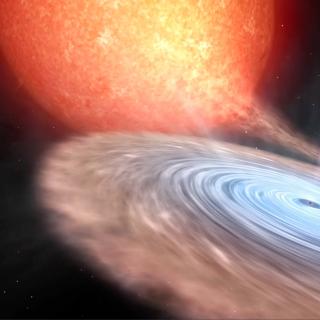Bibcode
Armas Padilla, Montserrat; Rodríguez-Gil, Pablo; Muñoz-Darias, Teo; Torres, Manuel A. P.; Casares, Jorge; Degenaar, Nathalie; Dhillon, Vik S.; Heinke, Craig O.; Littlefair, Stuart P.; Marsh, Thomas R.
Bibliographical reference
The Astrophysical Journal
Advertised on:
5
2022
Journal
Citations
2
Refereed citations
2
Description
We present a detailed time-resolved photometric study of the ultracompact X-ray binary candidate 4U 1812-12. The multicolor light curves obtained with HiPERCAM on the 10.4 m Gran Telescopio Canarias show a ≃114 minute modulation similar to a superhump. Under this interpretation, this period should lie very close to the orbital period of the system. Contrary to what its other observational properties suggest (namely, persistent dim luminosity, low optical-to-X-ray flux ratio, and lack of hydrogen features in the optical spectrum), this implies that 4U 1812-12 is most likely not an ultracompact X-ray binary, which is usually defined as a system with an orbital period lower than 80 minutes. We discuss the nature of the system, showing that a scenario in which 4U 1812-12 is the progenitor of an ultracompact X-ray binary may reconcile all the observables.
Related projects

Black holes, neutron stars, white dwarfs and their local environment
Accreting black-holes and neutron stars in X-ray binaries provide an ideal laboratory for exploring the physics of compact objects, yielding not only confirmation of the existence of stellar mass black holes via dynamical mass measurements, but also the best opportunity for probing high-gravity environments and the physics of accretion; the most
Montserrat
Armas Padilla